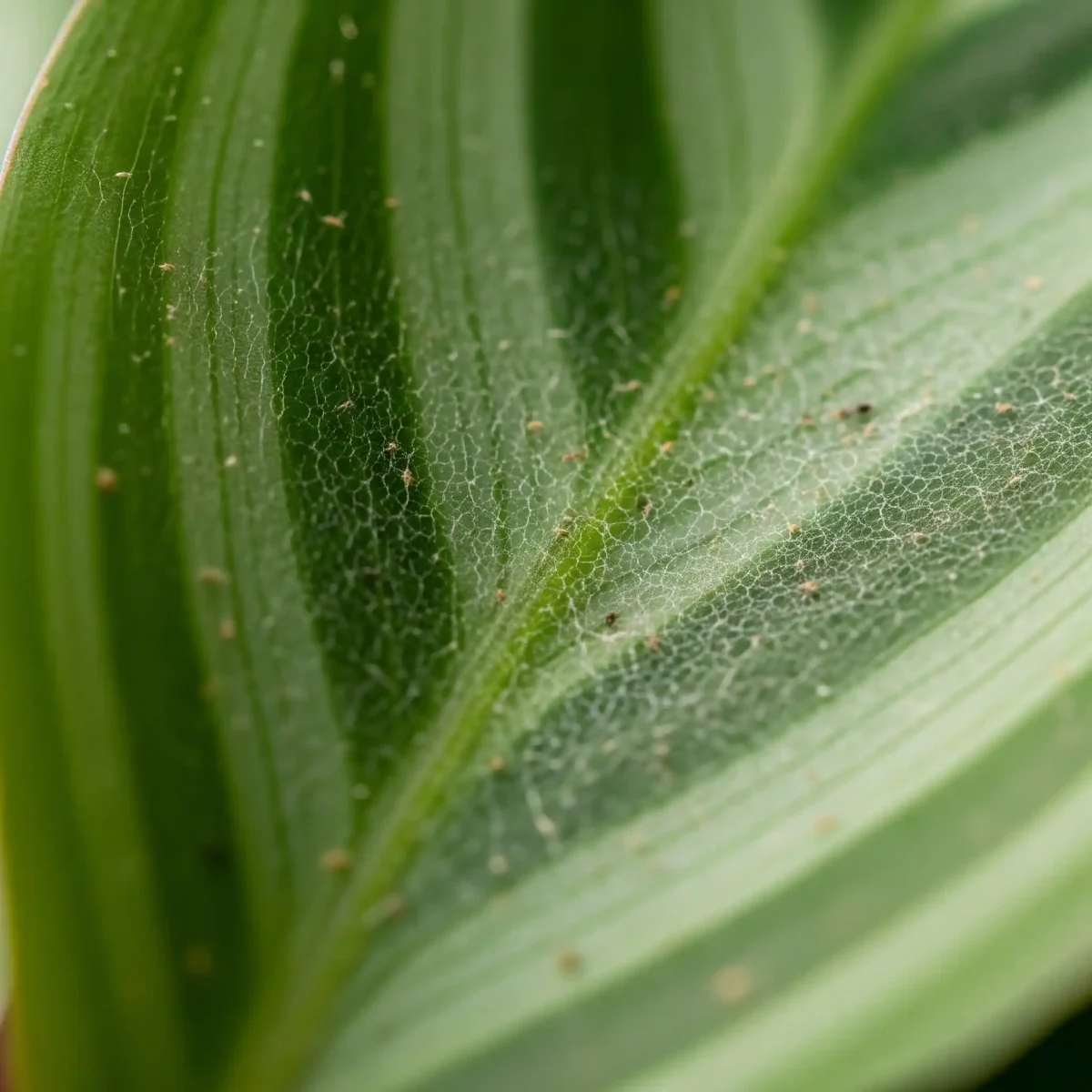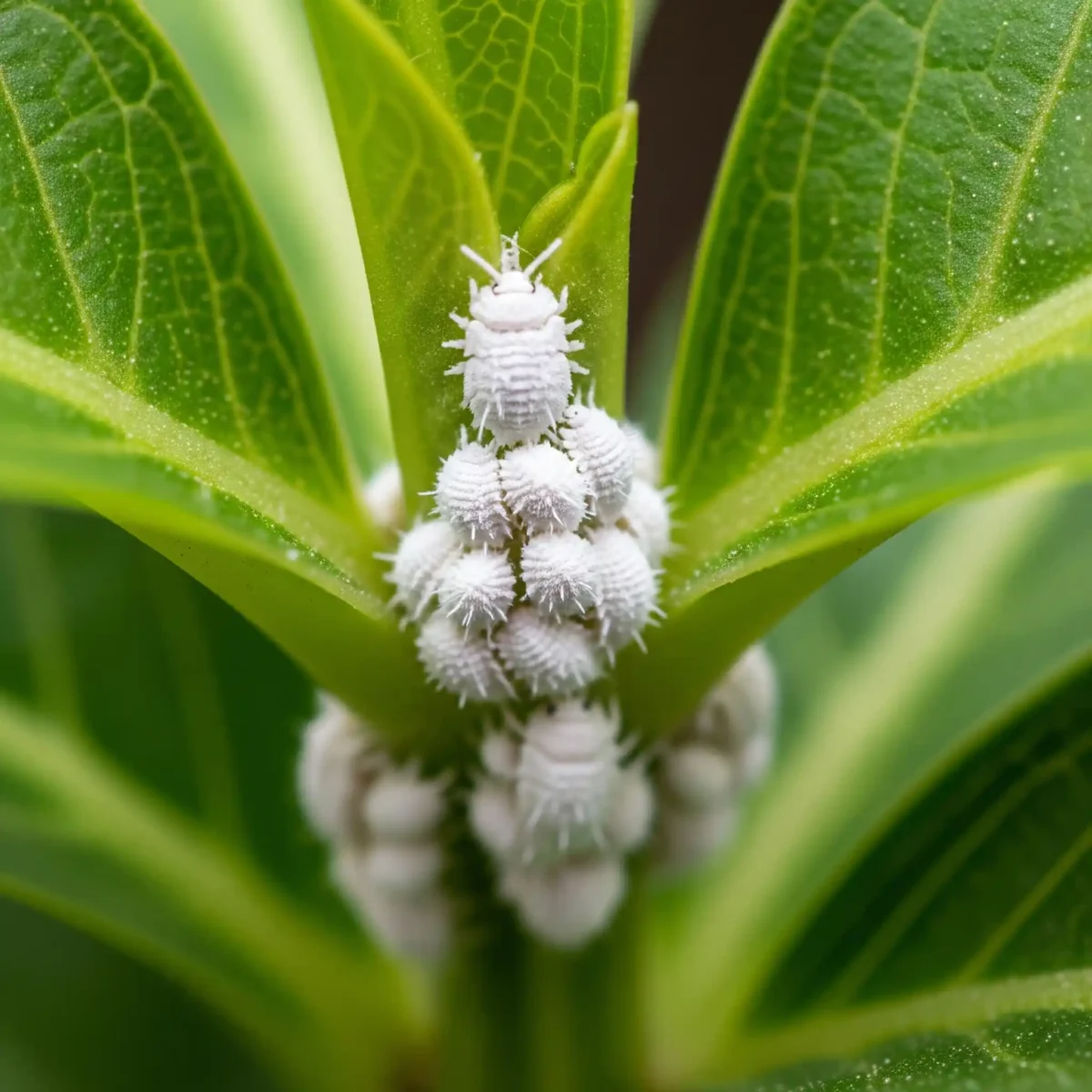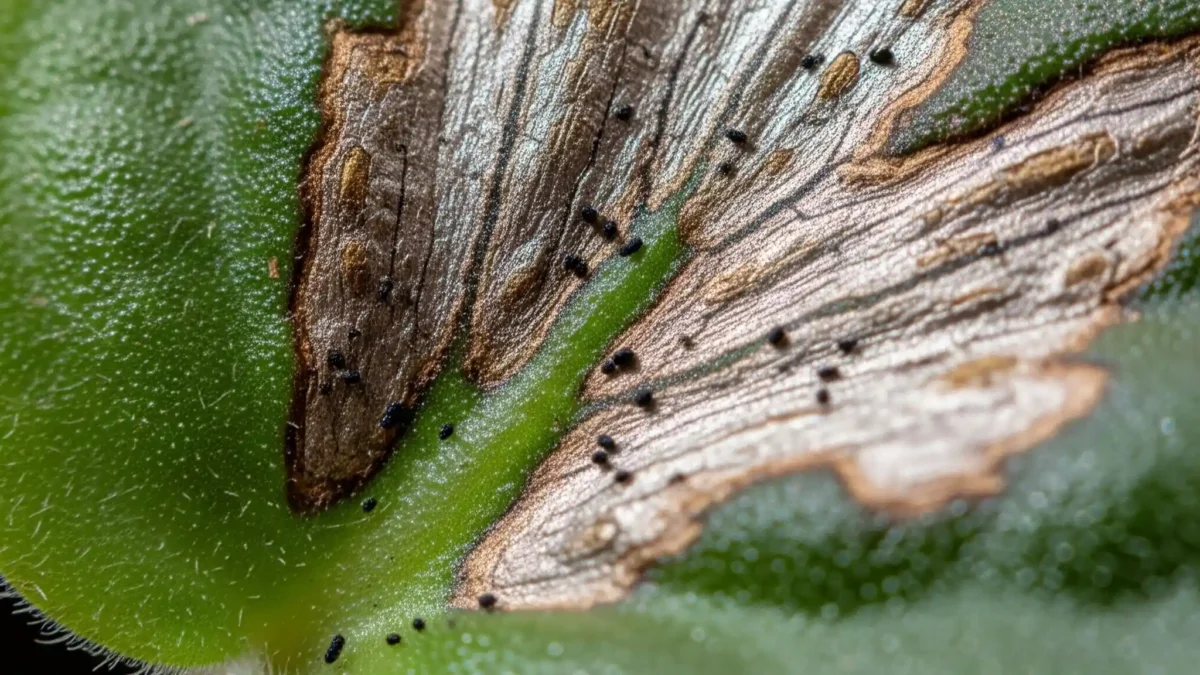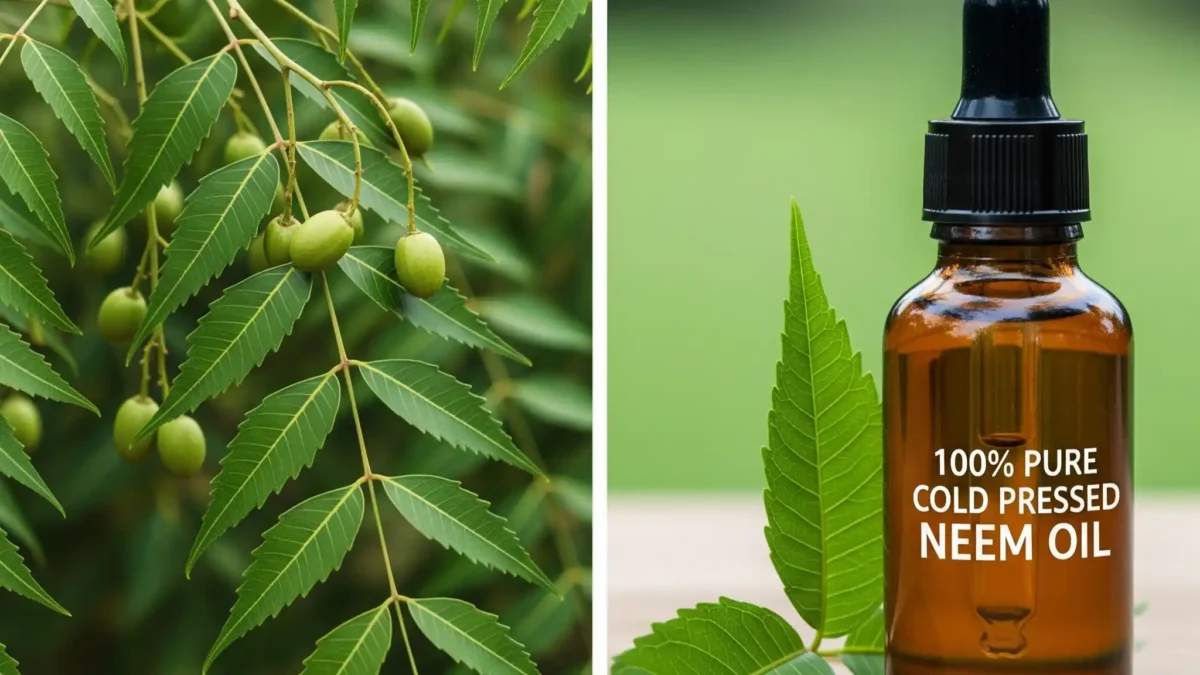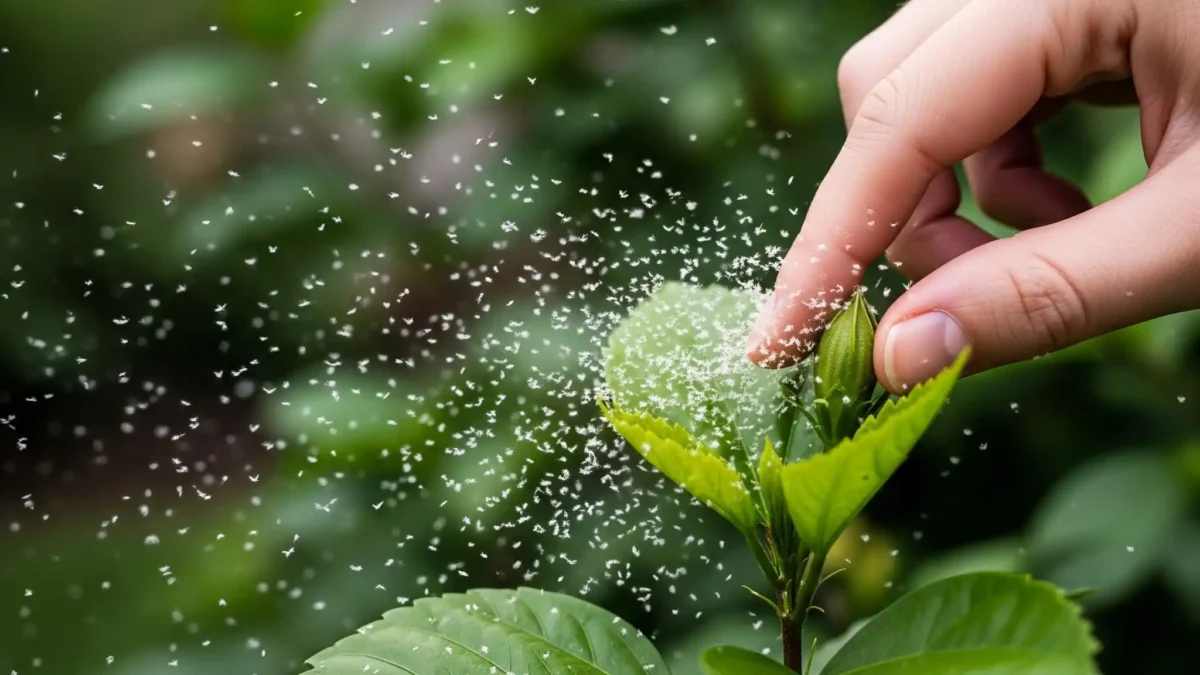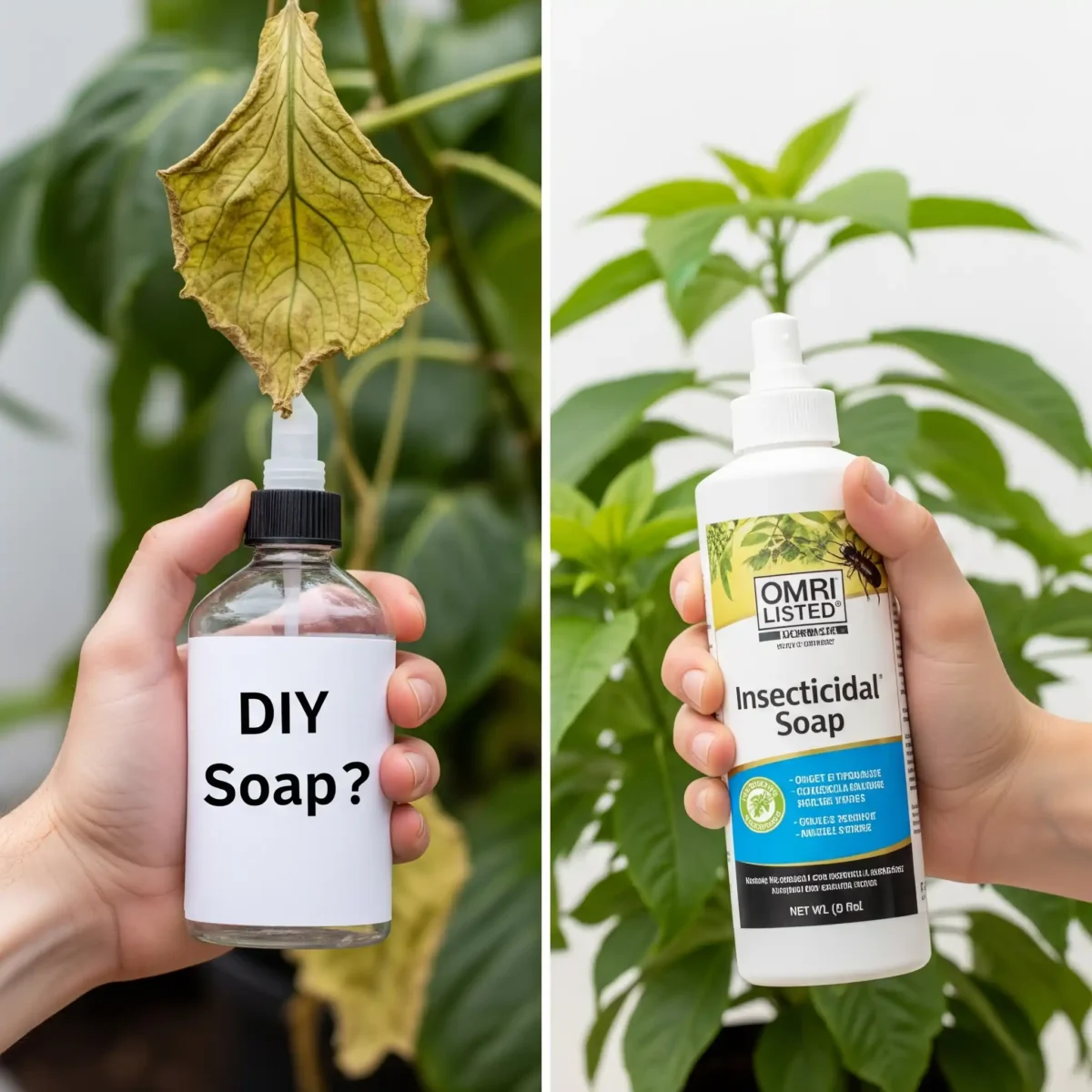Aphid Warning! How to Find and Treat These Tiny Plant Vampires?
Hey there, other plant lover! Have you ever leaned in to examine your favorite houseplant or valued rose bush, only to see groups of small, pear-shaped bugs taking over the fresh growth? Or maybe you’ve seen a strange, sticky, glossy stuff on the leaves below and wondered what might be causing it? If this sounds familiar, you probably have aphids, which are one of the most frequent and long-lasting pests in gardens and on houseplants.
But before you give up, let me comfort you that you are not alone in your fight and that it is possible to win! So, as plant parents, what do we need to know about aphids: how to find them and how to get rid of them? To find aphids, you need to check for tiny, soft-bodied bugs that can be green, black, yellow, pink, or other colors. They usually hang out in clusters on new stems, flower buds, and the undersides of leaves. There are several ways to cure an infestation, from very easy physical removal procedures and gentle natural therapies like insecticidal soap to more focused chemical controls for infestations that are particularly hard to get rid of or very bad. The most important thing, my buddy, is to find it early and act quickly. These small bugs suck sap, and if you don’t do anything about them, they can grow very quickly!
This book will be your complete plan for combat. I’ll provide you the information you need to confidently spot these pests, know how sneaky they can be when they harm things, and most importantly, choose the best ways to treat and stop them in your case. Are you ready to get your plants back from these little monsters and make them healthy and full of life again? Let’s get started with identifying and getting rid of aphids. You can do it!
What are these little terrors? Getting to Know the Enemy Aphid
It’s always a good idea to learn a little bit about the pest before we try to get rid of it. So, let’s formally meet the aphid. After all, knowledge is power!
A Closer Look at Aphid Anatomy
If you get a magnifying lens (which we highly recommend for plant detectives), you’ll see some important things:
- Aphids are little bugs, usually between 1 and 10 millimeters long. Their bodies are delicate and shaped like pears.
- Colors: They come in a whole range of colors! You might observe green aphids that blend in perfectly with foliage, black aphids, brown aphids, yellow aphids, pink aphids, gray aphids, or even “woolly” aphids that coat themselves in a waxy, white substance. The color of aphids typically changes depending on the type of aphid and the plants they eat.
- Key Features: They have a pair of antennae on their heads and two small tube-like structures at their back end called cornicles. These are the most noticeable features. People sometimes say that these cornicles look like tiny “tailpipes.” They are a common feature of aphids. They can release pheromones or secretions that protect them from harm.
- There are two types of aphids: those with wings (named “alates”) and those without wings (called “apterae”). When a colony is happy, wingless species are abundant. But when a colony becomes too big or the host plant starts to die, flying aphids often show up. These winged people can then fly out to locate new plants to live on. This is smart, but not what we want!

The Amazing (and a Little Scary!) Life Cycle of Aphids
One reason aphids can become such a big problem so fast is that they can reproduce very quickly:
- Aphids may reproduce quickly and without sex through a process called parthenogenesis. This is a very interesting trick that many species of aphids have. This means that females can have live female young (nymphs) without having to mate! These nymphs are basically little copies of their mother, and they are born ready to eat. This means that there is a lot of room for the population to grow.
- Many Generations: Aphids can have many generations in a single growing season since they reproduce so quickly. This can happen inside or in mild climes all year long.
- Overwintering: The way they survive the winter depends on the type of animal and the weather. Some of them survive the winter as eggs put on dormant plants, while others may survive as adults in protected areas or on other plants that they may live on.
What do they eat? The Truth About Sap-Sucking
Aphids are bugs that suck sap. Their mouthparts, which are called stylets, are very sharp and they utilize them to puncture the soft parts of plants, such young leaves, stalks, or flower buds, and suck out the nutrient-rich phloem sap. This sap is like the plant’s blood; it has a lot of carbohydrates and amino acids in it.
My short story: Imagine them as tiny, extremely productive plant juice boxes. Sadly, they aren’t very good at sharing, and they don’t seek permission before they start drinking!
Half the battle is knowing what they are and how they work. So, how do you find these tiny vampires before they attack your plants in full force?
Mastering Aphid Recognition: Important Signs and Symptoms for Correct Pest Identification
It’s time for you to put on your observation hat, plant detective. You might also want to get that magnifying lens I talked about. To be sure that aphids are there, you need to look for both the bugs themselves and the indications they leave behind.
Directly seeing the aphids themselves:
The easiest way to tell if you have an aphid problem is this.
- Where to Look: Aphids like to gather on the softest, most nutrient-rich areas of a plant. Check out:
- The undersides of leaves, especially young ones that have just opened up (aphids love to hang around there!)
- New stems and tips for growth
- Flower buds (they can seriously mess up a pretty bloom)
- What to Look For: You want to find groups of the small, pear-shaped bugs we talked about before. If there are several species, you might see a mix of colors. Otherwise, they might all be the same color. They might move slowly if you gently bother them.
- Different Colors and phases: Keep in mind that you can observe aphids in a range of colors (green, black, yellow, etc.) and at different phases of life. You might see small nymphs next to bigger adults, and if the colony is getting too big, you might even see some with wings.
Indirect Signs: The Evidence They Leave Behind (Their Calling Cards!):
You might see the indications of aphids before you see the bugs themselves, especially if they are well-hidden.
- Honeydew is a classic sign of aphids! When aphids eat plant sap, they make a sweet, watery waste product called honeydew. This honeydew covers leaves, stems, and anything else below the area that is affected, making them feel sticky or look too shiny. Aphids are likely to be the cause if you touch a leaf and it feels sticky.
- Sooty Mold: Sooty mold commonly comes after honeydew. This fungus is black and powdery and grows on the honeydew deposits that are sweet. Sooty mold doesn’t eat the plant itself, but it looks bad and can obstruct sunlight and make it harder for the plant to photosynthesize if it covers the leaves too much.
- Leaves that are yellow, curling, or twisted: Aphids suck sap from leaves all the time, which can make them yellow, curl down or in, pucker, or become generally twisted. New growth is often the most affected and might look very strange.
- Stunted Growth: A lot of aphids can make a plant very weak by taking away its vitality and nutrients. This usually makes things grow more slowly and makes them feel weak overall.
- Ant Activity: A Strange Hint: Have you seen a lot of ants running up and down your plant? Ants and aphids have an interesting relationship. Ants like the sweet honeydew that aphids make, and they “milk” it from the aphids. Some types of ants will even “farm” the aphids and keep them safe from predators in exchange! If you see a lot of ants on a plant, it’s a good sign that there is an aphid colony nearby.
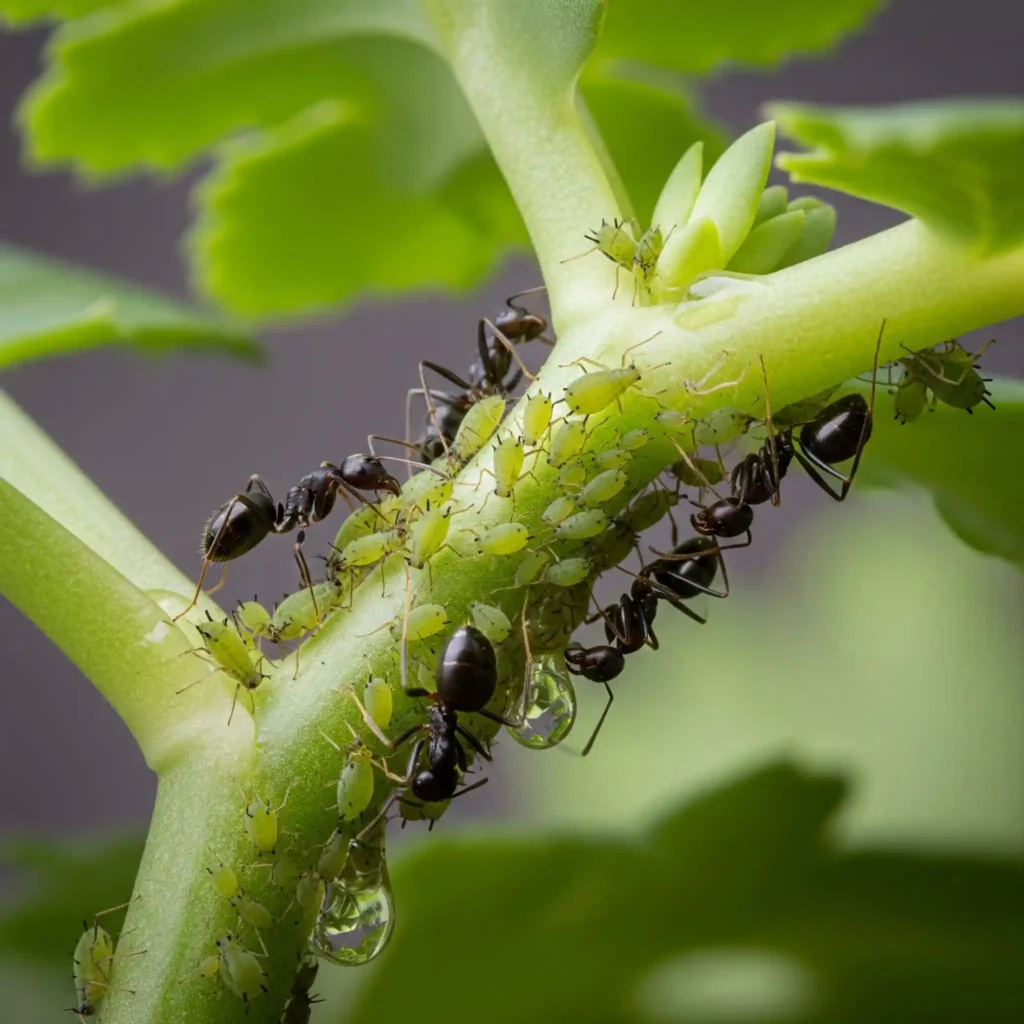
- Aphids shed their skins (exoskeletons) as they grow. They do this multiple times. You might find these little, white, paper-like shed skins stuck to leaves and stems, usually close to an active aphid colony.
- Galls or puckering: Some types of aphids can inject things into the plant while they eat, which makes the plant tissue react by growing in strange ways, like galls or puckering patterns on the leaves.
Here’s a nice tip: When you check on your plants, make sure to do a good job! Aphids, especially the green ones, can be very good at hiding. If you’re not sure if what you’re seeing is an aphid, try taking a close-up picture with your phone. You can then use pictures from well-known gardening or university extension websites to assist you figure out what it is.
So you can be sure that aphids have moved in and are getting a little too comfortable on your plants. Before we talk about giving them an eviction notice, let’s briefly go over what kinds of problems these little sap-suckers are generating for your plants.
How Aphids Hurt Your Plants: It’s Not Just Ugly!
A lot of aphids may do a lot of damage to your plants, and it’s not simply a cosmetic problem. There are two types of damage they can cause: direct and indirect.
Direct Damage from Their Constant Eating:
- Aphids hurt plants mostly by taking away their sap and making them weaker. They take away the plant’s energy and building blocks by constantly sucking out the nutrient-rich sap. This can make the plant weaker in overall, which makes it less strong and more likely to be affected by additional pressures.
- Physical Distortion of Growth: Aphids’ saliva can occasionally contain chemicals that make the plant tissues react when they eat, especially when they eat fresh, fragile growth. This can cause leaves and stems to curl, pucker, twist, or just look weird. Flower buds can sometimes change shape or not open all the way.
- Stunted Growth: An afflicted plant will generally show stunted growth because its energy stores are always running low. The new leaves might be smaller than normal, and the whole plant might not grow to its full size.
Sneaky After-Effects: Indirect Damage
- Honeydew and Sooty Mold: We’ve already talked about how the sticky honeydew that aphids leave behind is not only messy but also a great place for ugly black sooty mold to thrive. The mold itself doesn’t eat the plant, but a thick layer of it might block sunlight from reaching the leaf surface, which makes it harder for the plant to photosynthesize. This makes the plant even weaker.
- Virus Transmission: The Most Serious Threat: This is often the worst and most damaging thing that aphids can do, especially in a garden. Aphids are well-known for spreading a lot of different plant viruses. They can readily spread these viruses as they wander from one sick plant to another, eating along the way. Plant viruses can cause a number of problems, such as mottling, streaking, severe deformation, and even death. They are also exceedingly hard, if not impossible, to treat. This means that controlling aphids is important not only for the health of the plant that is afflicted, but also for your whole garden or collection!
Effect on Different Types of Plants:
Aphids can attack many different types of plants, but some seem to be their favorites or exhibit harm more easily. For instance:
- Roses are well known for getting aphids on their young buds and branches.
- New vegetable seedlings and young, fragile plants are sometimes exceedingly weak.
- Aphids can also harm many fruit trees, which can hurt both the leaves and the growth of the fruit.
- Any plant with soft, green new growth can be a target inside.
That’s enough about how bad aphid damage is! The good news is that there are a lot of ways to get rid of these pests and keep your plants safe. Let’s speak about how to get rid of those aphids and serve them their eviction notice!
Notice of Eviction! Your Arsenal of Aphid Treatment Methods That Work (From Gentle to Strong)
Okay, let’s get to work and show them aphids who’s in charge! The best part is that you have a lot of ways to address the problem, from very light and physical ones to stronger natural ones and, if absolutely necessary, chemical ones. The best way to deal with an infestation depends on how bad it is, what kind of plant it is, and what you like best.
The least harmful and most physical methods should be your first line of defense.
These frequently work better than you’d think, especially for small to medium-sized infestations. They are also the best for the environment and helpful insects.
- A Strong Jet of Water: This is usually the first thing I try.
- How to do it: A forceful spray of water from a garden hose will knock a lot of aphids off of strong outdoor plants, sending them plummeting to the ground where they are less likely to come back. If you have delicate houseplants, you can try holding them over a sink and using a kitchen sprayer on a low but steady setting.
- Pros: Easy, free, and safe!
- Cons: If aphids come back, you might have to do it again every few days. It might not be good for really fragile plants that could be harmed by the water pressure. Make sure there is good airflow afterwards so the leaves dry rapidly.
- Wiping or Squishing (The Hands-On Way!):
- How to do it: If you only have a few leaves that are impacted or if the infestation is mild, you can wipe the aphids off with a damp cloth or paper towel. If you’re not too squeamish (and maybe using gloves), you can also gently squash them.
- Pros: It works right away on the ones you take out, and there are no chemicals involved. It’s also surprisingly enjoyable!
- Cons: It can take a long time for big plants or severe infestations.
Natural and Organic Controls: Using Nature’s Power
These natural and organic approaches are great if physical measures don’t work or if the problem is more than just one person:
- Insecticidal soaps are soaps that have been made to kill bugs.
- How they work: Insecticidal soaps kill soft-bodied insects like aphids by breaking down the membranes on the outside of their cells, which makes them lose water and die. To work, they have to touch the pest directly.
- Important Things to Remember:
- Don’t use dish soap from your house; use a real insecticidal soap. Some dish soaps can kill aphids, but they can also take off the protective waxes from plant leaves, which could hurt the plants (phytotoxicity). Insecticidal soaps made for use in stores are designed to be safer for plants.
- Before treating the whole plant, always test a tiny, hidden section first and wait 24 to 48 hours to see if there are any bad effects.
- It is really important to cover everything completely! You should spray all of the sections of the plant that have bugs on them, especially the undersides of the leaves where aphids like to hide.
- They don’t leave any residue, so you may need to use them again.
- Neem oil is an organic choice that comes from the seeds of the neem tree. It is highly popular and can be used in many ways.
- How it works: Neem oil acts in more than one way. It can keep insects away, stop them from eating, and stop them from growing (by getting in the way of their molting process). It can even kill insects directly by suffocating them.
- Use: Neem oil is normally offered as a concentration that you have to mix with water (often with a little mild soap to help it mix). Spray all over the plants, making sure to cover all of them.
- Warnings: Apply neem oil when the weather is cooler, such early in the morning or late at night. Don’t put it on plants that are in direct, scorching sun, as this can sometimes burn the leaves. Try it out on a small area first, like with any other spray.
- Horticultural oils, like summer oils and dormant oils, are very refined oils made from plants or petroleum. They kill insects like aphids and their eggs by smothering them.
- Use: They must be used cautiously and according to the guidelines on the label, or else they could hurt plants. “Summer oils” are lighter and can be used on plants that are still developing. “Dormant oils,” on the other hand, are heavier and are usually used on woody plants that are not growing in late winter or early spring to kill eggs that have been lying dormant all winter.
- Biological Control: Nature’s Cleanup Crew! Introducing Beneficial Insects:
- This is a great long-term plan, especially for greenhouses or gardens outside. You’re basically letting the aphids’ natural enemies do the work for you!
- Ladybugs, especially their larvae, are well known for eating a lot of aphids. One ladybug larva may eat hundreds of aphids!
- Another very good predator is the lacewing larvae, which are commonly called “aphid lions.”
- Parasitic wasps are little wasps that don’t hurt people and lay their eggs in aphids. The aphid larva then grows inside the aphid, killing it and leaving behind a mummified shell, which is called a “aphid mummy.”
- How to get them: You can usually buy helpful bugs online from garden supply stores. You can also bring them to your garden by planting herbs and flowers that give them nectar and pollen, such dill, fennel, yarrow, and alyssum.
- Planting with Friends:
- It is believed that some plants keep aphids away or hide the smell of plants that are easy to get at. Some examples are chives, garlic, marigolds, catnip, and onions.
- As was said above, other plants can attract helpful bugs that eat aphids. One way to handle pests is to plant these in the right places.
- Homemade Sprays (Be Careful and Know What You’re Doing!):
- There are a lot of DIY aphid spray ideas online that employ things you probably already have around the house.
- Some examples are sprays produced with tomato leaves, chili peppers, or garlic.
- My best suggestion is to be very careful. Some of these can work, but they can also be hard to predict.
- Do a lot of research on any DIY recipe you find on a trusted site.
- Before spraying the whole plant, always test the homemade spray on a tiny, hidden portion of it first. Wait at least 24 to 48 hours to see whether there are any signs of leaf damage.
- Some DIY mixtures could hurt helpful bugs or even irritate your skin or eyes.
Chemical Controls (Only Use When Necessary and Responsibly):
There are occasions when an aphid infestation gets out of hand, even after we’ve tried our best with milder ways. Or you might be dealing with a plant that’s very valuable and in a lot of danger. Chemical controls may be an option in some situations, but only as a last resort and with a lot of care.
- Pyrethrins and Pyrethroids:
- Chrysanthemum flowers are used to make pyrethrins, which are pesticides. Pyrethroids are man-made equivalents that are often stronger and last longer.
- They are broad-spectrum, which means they can kill a lot of different insects, even good ones like ladybugs and bees. This is why they need to be handled with care so that they don’t hurt other species.
- Insecticides that work on the whole system:
- The plant takes these compounds in through its roots from a soil drench or sometimes through its leaves from a spray. Then, they move through the plant’s tissues. Aphids eat the plant and die because they take in the insecticide.
- You should only use systemic insecticides when you really need to and with great care.
- If the plant flowers and the insecticide is in the nectar or pollen, it might be dangerous for pollinators like bees.
- You should never use them on plants that you plan to consume (fruits, vegetables, herbs) unless the label says it’s safe to do so and you observe the pre-harvest interval (the time between applying the product and when it’s safe to eat the plants).
- They can stay in the plant for a while.
And my best piece of advice for whatever product you use, whether it’s organic or not, is ALWAYS, ALWAYS, ALWAYS READ AND FOLLOW THE LABEL INSTRUCTIONS METICULOUSLY! The label is the law, and it has important information on how much to use, when to use it, what protective gear you need, and any possible environmental risks. It is important for your safety, the safety of your pets, the health of your plants, and the health of the environment.
It’s great to win the battle against an active infestation, but to really win the war, you need to use clever techniques to keep the aphids from coming back in the first place. Let’s speak about how to stop it!
Preventing Aphids: Smart Ways to Keep Them Away for Good
Experienced gardeners will tell you that it’s better to prevent problems than to fix them, especially when it comes to pests like aphids! You may greatly lower the likelihood of aphids getting into your plants and causing difficulties by making a few small changes to your routine.
- Regularly checking on your plants is your best way to stop problems.
- This is, without a question, the most crucial thing you can do. Check on your plants closely and often, at least once a week, if not more often.
- Check for sticky honeydew, wandering aphids, and new growth and flower buds. Also, look under leaves for any of the early symptoms we talked about.
- It’s a lot easier to deal with an aphid problem when you only have a few than when you have a whole colony!
- The Quarantine Protocol: Keep New Plants Separate
- When you bring home a new plant from the nursery, a friend, or even a plant swap, act like it might be bringing bugs with it!
- Before you even bring it inside or near your other plants, check it carefully for any signs of pests, such aphids.
- For a few of weeks, it’s a good idea to keep fresh plants in a room or area by themselves. This time of quarantine lets you look at it thoroughly and make sure it’s clear of pests before you add it to your other plants.
- Keep your plants healthy and strong. Strong plants are less likely to get pests!
- Plants that are healthy and growing well are considerably less likely to get sick or have pests, just like people.
- Make sure your plants are getting the right amount of water, light, and food for their needs.
- Don’t give your plants too much fertilizer, especially if it has a lot of nitrogen. Aphids are especially drawn to the new growth that is soft, lush, and full of sap, which can happen when there is too much nitrogen. The ideal way to feed is to have a balance.
- Help Good Bugs (For Outdoor Gardens):
- If you garden outside, work to make the area more inviting for the aphids’ natural enemies. Plant flowers like dill, fennel, yarrow, alyssum, and sunflowers that give adult ladybugs, lacewings, and parasitic wasps nectar and pollen. Don’t use broad-spectrum pesticides that will hurt these valuable allies.
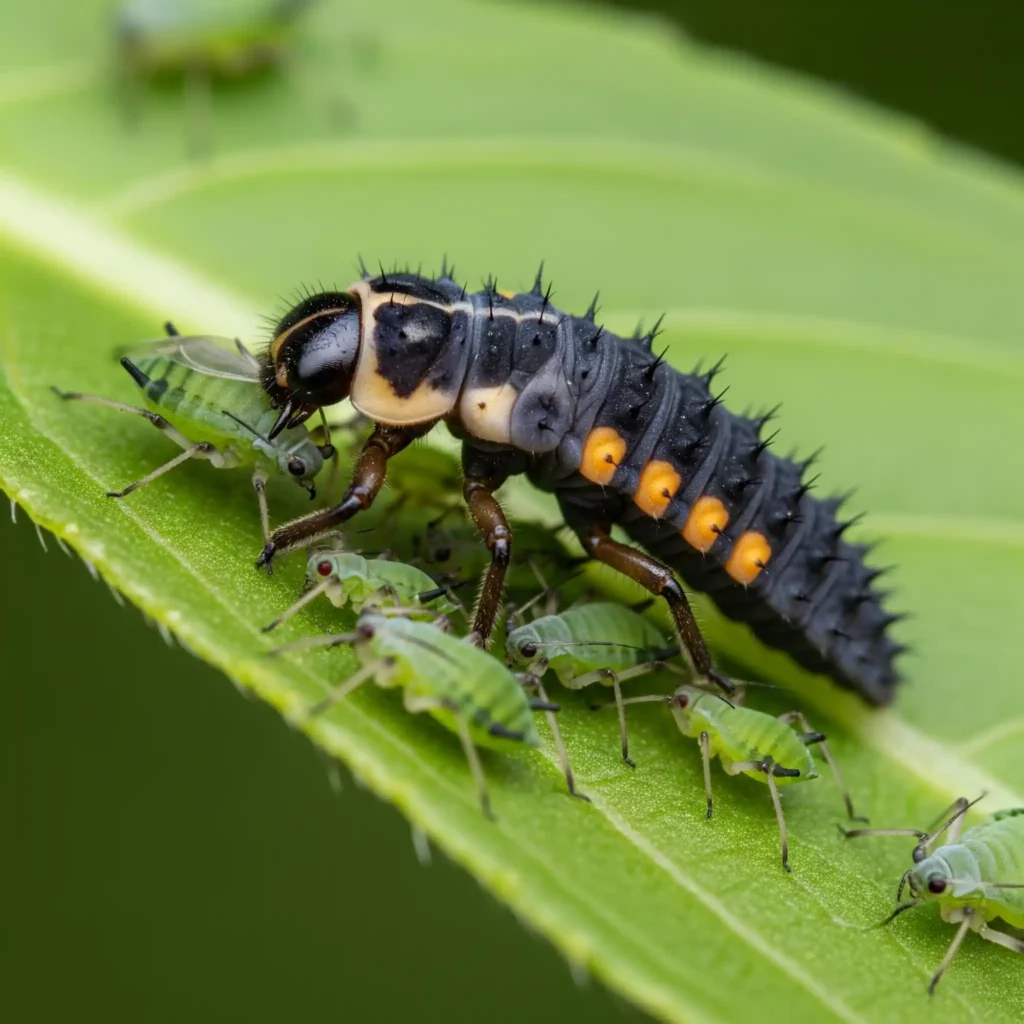
- Use reflective mulches or row covers, especially for vegetable gardens outside:
- Using reflective mulches, such silver-colored plastic mulch, on the soil can help keep flying aphids from settling on some outdoor crops, notably vegetables.
- Floating row covers help keep aphids from getting to young plants that are easy to damage.
- Manage the number of ants:
- Do you remember how ants “farm” aphids for their honeydew and even keep them safe? If you have a lot of ants and aphids that keep coming back, controlling the ant population can assist manage the aphids in a roundabout way. You can employ many kinds of ant baits and obstacles.
- Be smart when you prune:
- If an outbreak does happen on a certain part of a plant, the fastest way to get rid of a lot of aphids is to cut off the stems or leaves that are most affected (and get rid of them correctly—don’t just throw them on the ground or in your compost if they are full of live aphids!).
- Keep the area around your plants or garden clean:
- Keep the area around your plants free of weeds and plant debris. Weeds can sometimes be homes for aphids, and plant waste might be a place for aphid eggs to stay until spring. A garden that is clean is often a healthier one.
By taking these steps to keep these common garden pests away, you’re making your garden a very strong defense against them. To end our trip to get rid of aphids, here are some concluding thoughts.
In conclusion, you can beat aphids and get your garden (and houseplants!) back.
We’ve traveled through the little world of aphids, learning who they are and how they act in cunning ways, and arming ourselves with a lot of techniques to treat and stop them. It may seem like a lot, but I assure that with some practice and observation, it will become second nature.
It could seem hard to deal with aphids at first, especially when you see them taking over a plant you love. But please remember that you can definitely keep these small bugs under control and safeguard your plants if you know what you’re doing and work hard. You have a lot of great tools at your disposal, from a simple but surprisingly efficient blast of water to strategic natural controls like insecticidal soap or beneficial insects.
The most important things to remember are to be alert and respond quickly. Your superpower is to check on your plants often. It’s much easier to deal with a little aphid problem than a big one.
Don’t let aphids get you down or keep you from enjoying gardening and taking care of houseplants! Look at your plants with love and curiosity, take action when you need to, and enjoy the huge pleasure of having a healthy, colorful, and pest-free garden or indoor jungle. You can definitely do this!
What is the best way to get rid of aphids, or what do you always do? Please share your thoughts and experiences in the comments below. We can all learn from each other!
FAQ: Answers to Your Quick Aphid Questions
When plant parents have to cope with these annoying little sap-suckers, they commonly ask these questions:
Why do aphids keep coming back to my plants even after I’ve treated them?
There are a few things that could cause this to happen! Aphids reproduce very quickly, so even if you miss any, their numbers might quickly go back up. Aphids with wings can also fly in from outside or from plants that are close by and already have them. You might have missed any small cracks where they could be hiding. Consistent monitoring and repeat treatments (if necessary with safer choices) are typically crucial, as is eliminating any local sources of infestation.
Do aphids hurt people or pets?
No, thank goodness! Aphids are bad for plants, but they don’t hurt people or pets directly. They don’t sting or bite humans. The primary worry is how much harm they inflict to our vegetation.
Can I use ordinary dish soap to get rid of aphids?
Some dish soaps can kill aphids, but it’s not the best first pick. They mostly do this by breaking up the aphids’ outer shell. Household dish soaps are detergents made to clean dishes. They often have scents, degreasers, and other chemicals in them that can hurt plant leaves by taking off their protective waxy covering (a condition known as phytotoxicity). Using a real insecticidal soap that is made to be gentle on plants while still killing bugs is usually safer and works better. If you really need to use dish soap in a hurry, make sure to choose a very weak, unscented one that is very diluted (1–2 tablespoons per gallon of water) and test it on a small section of the plant first.
When do aphids do their best work?
In the spring and early summer, when there is a lot of new, delicate plant growth that aphids like to eat, they are often at their most active and easy to see. They can also be around at other times of the year, though, especially in warm climates or on houseplants, where they can breed all year long.
Will aphids only attack some plants, or will they go after anything?
It’s a little of both! Some types of aphids are host-specific, which means they only eat one type of plant or a group of plants that are quite similar to it. Other types of aphids are generalists and will eat a wide range of plants. They are almost always drawn to soft, luxuriant, new growth on any plant since it is easier for them to pierce and has a lot of nutrients.



